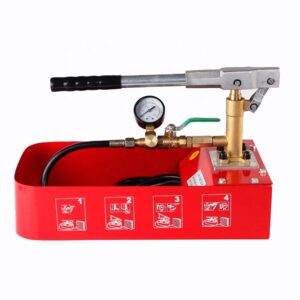Hydrostatic Pressure Testing
Heat exchangers, pressure vessels, pipework, systems and components regularly require hydrostatic or hydraulic pressure testing. By carrying out hydrostatic testing, it can provide essential information on the component’s suitability.
The heat exchanger, vessel or pipe system is filled with a liquid, usually water, and pressurisation of the associated equipment to the specified test pressure.
Why Hydrostatic Pressure Test
The hydrostatic testing measures the rate of expansion of the unit. It is important to ensure your vessel/heat exchanger can safely hold the required amount of pressure that it’s rated for. It will ensure that the weld joints, flanges and fittings are correctly fitted and confirms that the material used has the required strength to sustain the pressure.
The Hydrostatic Testing Process
 This test should only be performed by skilled personnel to avoid the risk of any incidents. The process of hydrostatic pressure testing will differ slightly depending on the type of vessel/heat exchanger being tested. However, the goal of all hydrostatic testing is to examine the strength of the unit under test and identify leaks or weak spots.
This test should only be performed by skilled personnel to avoid the risk of any incidents. The process of hydrostatic pressure testing will differ slightly depending on the type of vessel/heat exchanger being tested. However, the goal of all hydrostatic testing is to examine the strength of the unit under test and identify leaks or weak spots.
Air is removed from the associated equipment and then brought up to the test pressure (usually 1.5x the designed pressure limit but different standards have different pressure requirements).
We can carry out hydrostatic pressure testing on the following:
- Shell and Tube Heat Exchangers
- Pipework
- Steam Valves
- Commercial Food Kettles
- Calorifiers
- Air Receivers
- Boilers
- Pressure Vessels
- Hydraulic / Pneumatic Fittings / Assemblies
- Shot Blast Vessels
As a leading supplier to the process industries, we can provide a range of testing solutions.
